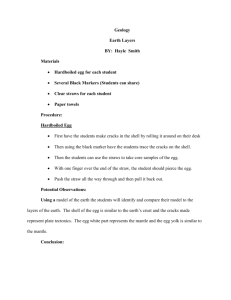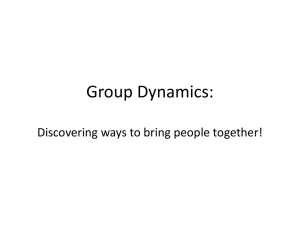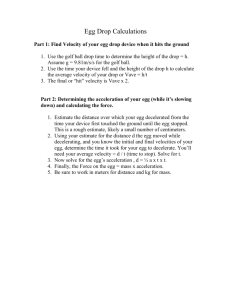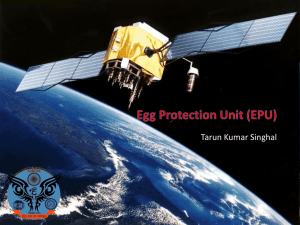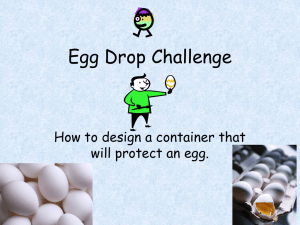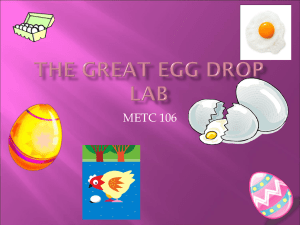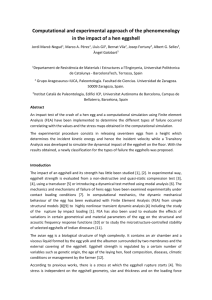Title: Tectonic Egg Lab
advertisement
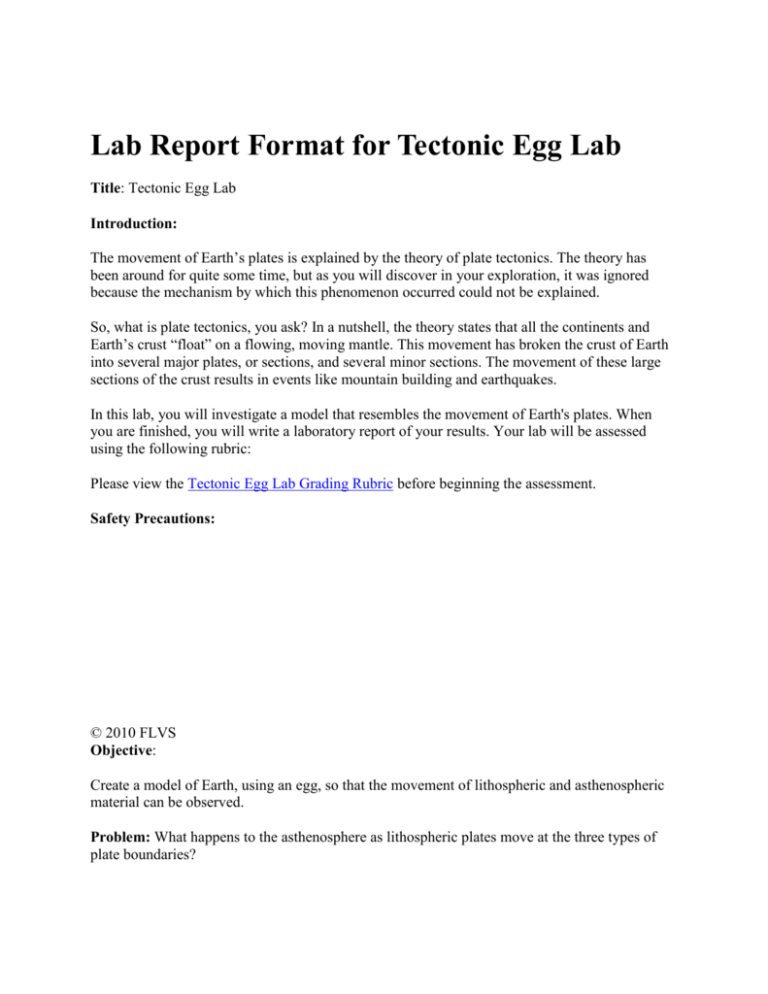
Lab Report Format for Tectonic Egg Lab Title: Tectonic Egg Lab Introduction: The movement of Earth’s plates is explained by the theory of plate tectonics. The theory has been around for quite some time, but as you will discover in your exploration, it was ignored because the mechanism by which this phenomenon occurred could not be explained. So, what is plate tectonics, you ask? In a nutshell, the theory states that all the continents and Earth’s crust “float” on a flowing, moving mantle. This movement has broken the crust of Earth into several major plates, or sections, and several minor sections. The movement of these large sections of the crust results in events like mountain building and earthquakes. In this lab, you will investigate a model that resembles the movement of Earth's plates. When you are finished, you will write a laboratory report of your results. Your lab will be assessed using the following rubric: Please view the Tectonic Egg Lab Grading Rubric before beginning the assessment. Safety Precautions: © 2010 FLVS Objective: Create a model of Earth, using an egg, so that the movement of lithospheric and asthenospheric material can be observed. Problem: What happens to the asthenosphere as lithospheric plates move at the three types of plate boundaries? Hypothesis: Read through all of the procedures and record a hypothesis about the activity below: Materials: water pan raw egg cracking device such as a teaspoon paper towels or newspaper Procedure: 1. With the assistance of an adult, boil an egg until all parts are cooked (about 10 minutes). Pour the water off and allow the egg to cool. If the egg is not cool to the touch before beginning, you could suffer a burn. You can put the egg in cold water to cool it more quickly. 2. Once the egg is cool, use a cracking device, such as a teaspoon, to lightly tap the shell in several places so there are several large cracks in the shell. Do not make too many cracks. There should be several large pieces of eggshell. 3. Place the egg on a layer of paper towels or newspapers. 4. Try to move the pieces of the cracked egg shell around on the surface of the egg. (Don't remove them; just see if they slide around.) There should be slight motion allowed by the membrane holding the shell to the rest of the egg inside. 5. Next, find two sections of the egg that are fairly large and on opposite sides of a crack. Use your index fingers and gently pull the two sections away from each other. Observe what happens in the area of the crack between the pieces. Record your observations. 6. Stay in the same area of the egg and push the two pieces toward each other. Observe what happens in the area of the crack. Record your observations. 7. Stay in the same area of the egg and try to slide one section of the shell up or away from you and pull the other down or toward you. Observe what happens in the area of the crack. Record your observations. Data and Observations: 1. Did the experiment support your hypothesis? Using the data from your experiment, describe why you believe your hypothesis was either proved or disproved. 2. If the egg is a model of Earth, what does each part of the egg represent? Egg/Earth Counterparts Portion of the Egg Part of the Earth It Represents Whole egg Eggshell Cracked pieces of the eggshell Egg white Egg yolk 3. When you moved parts of the eggshell, 1. a. What occurred in the area of the crack when the two pieces were pulled or pushed apart? 1. b. What occurred in the area of the crack when the two pieces were pushed toward each other (together)? 1. c. What occurred in the area of the crack when the pieces were pushed so that they slid in opposite directions past each other? Analysis and Conclusion: In your own words, write an analysis of the differences between the types of tectonic plates and the resulting observations in the asthenosphere. Be sure to include terminology from the lesson and direct references to your data.
